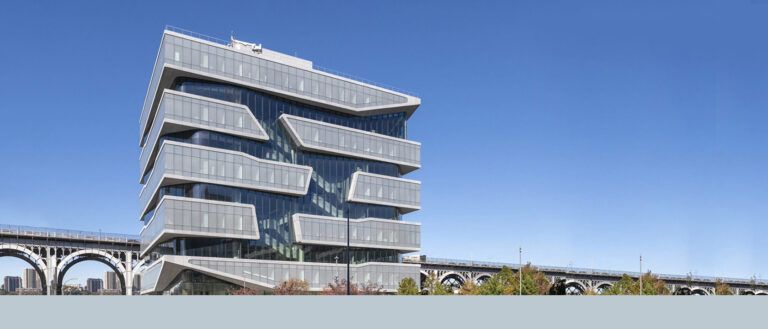What is Capital Expenditure, its Types, and Formula? Here’s a Complete Guide

- What is Capital Expenditure?
- Examples of Capital Expenditure
- Types of Capital Expenditure
- Capital Expenditure Formula
- Example of How to Use Capex
- How to Calculate Capital Expenditure
- Capital Expenditure vs. Revenue Expenditure
- Efficient Capital Expenditure Budgeting Practices
- Learn Capital Expenditures with Emeritus
In businesses, capital expenditure is the amount of money that’s spent on any asset, such as real estate, office equipment, furniture, company vehicles, and employers. But that’s just the most obvious part of the picture. There is a lot that comes under the umbrella of capital expenditure. This article will help you understand what is capital expenditure at a deeper level, with examples, what are its different types, how you can calculate it, and more.
What is Capital Expenditure?
Capital expenditure, or ‘capex’, refers to the funds that a company uses to buy, upgrade, and maintain physical assets like property, plants, buildings, technologies, or equipment. Companies use capex for two reasons: to maintain existing assets (such as repairing a roof, fixing equipment, etc) and to foster future growth (such as buying new factories or equipment).
Examples of Capital Expenditure
Capital expenditures, sometimes also referred to as capital investments, are typically expensive or valuable purchases that last over a long period of time. Some of the common examples are:
Machinery and Plant
New equipment and buildings can increase output and open the door to new possibilities. They can make operations more efficient, boost production, or replace obsolete processes that aren’t working well. As a result, they are considered investments.
Software and Hardware
Software and hardware for your business are important for enhancing the performance of your operations. Repairing or replacing hardware, such as desktop computers and tablets, or upgrading your software-as-a-service (SaaS) solutions fall under capital expenditure.
Upgrades to Existing Assets
Upgrades or improvements to existing assets are considered capital investments because they help the business to run smoothly and grow rapidly.
Types of Capital Expenditure
Different types of capital expenditure that help companies earn long-term value are:
Expenditure Made to Minimize Costs
Investment to buy the right technologies, adopting modern marketing methods, and hiring talented workers are some examples in this section.
Expenditure Made for Revenue Growth
Investment in acquiring new customers and buying cutting-edge technologies falls under this capex.
Non-Economic Expenditure
Expenses incurred without the expectation of gaining any monetary benefits are non-economic expenditures. Examples are expenditure on social activities and investment in research work.
Capital Expenditure Formula
Now that you have understood what is capital expenditure with examples, and its various types, let’s check the formula for it.
To calculate capital expenditure, the income statement (cash flow statement) and balance sheet are needed. The formula for that is:
CapEx = ΔPP&E + Current Depreciation
Where Capex = capital expenditure; ΔPP&E = the change in property, plant, and equipment (or PPE)
Capex vs. Operating Expenses (OpEx)
Businesses often deal with multiple expenses, from office and factory rent to workers’ wages and material costs. To streamline these expenses, businesses classify them into capex and OpEx.
Let’s understand each term in-depth to find the differences.
Capex is the expense of buying significant goods and services to improve the company’s performance and growth. These are long-term expenses, which include the cost of fixed assets such as property, plant, and equipment (together referred to as PPE).
OpEx, on the other hand, is the expense businesses incur to run their regular operations. These are short-term expenses which include the cost of rent and utilities, wages, accounting, and legal fees, property taxes, business travels, and overhead costs, such as Selling, General and Administrative (SG&A) expenses. (such as selling, general and administrative expenses).
READ MORE: Want to Ace Your Finance Interview? Here’s a Complete Guide
Example of How to Use Capex
With the understanding of what is capital expenditure, let’s understand how it works with an example. =
Let’s say that ABC Company spent $7.46 billion on capital projects during the fiscal year, while XYZ Corporation spent $1.25 billion on PP&E during the same fiscal year. For that year, ABC Company’s cash flow from operations was $14.51 billion, and XYZ Corporation’s was $6.88 billion.
Here’s how to figure out CF(Cash Flow)-to-CapEx(Capital Expenditure):
CF/CapEx= Cash Flow from operation / CapEx
where:
CF/CapEx=Cash flow to capital expenditure ratio
Using this formula, ABC’s CF-to-CapEx is as follows:
$14.51 billion / $7.46 billion
= 1.94
XYZ’s CF-to-Capex is as follows:
$1.25 billion / $6.88 billion
= 5.49
It’s important to remember that this is a ratio for a certain industry and that it should only be compared to a ratio from a company with similar capex needs.
How to Calculate Capital Expenditure
By using your organization’s income statement and balance sheet with the following formula, you can figure out how much you spent on capital:
Capex = PPE (current period) – PPE (prior period) + Depreciation (current period)
Even though the formula isn’t too complicated, it’s best to get help from a tax and financial professional to make sure you’re calculating your capital expenditure correctly.
Capital Expenditure vs. Revenue Expenditure
Typically, Capex is a one-time, significant purchase of fixed assets that will be put to use for longer-term revenue production. The continuous running costs, which are one-time costs incurred to maintain everyday business operations, are known as revenue expenditures. Here are the following differences between capital expenditure and revenue expenditure.
- The sum total of money spent on new or improved capital assets is known as capital expenditure. However, revenue expenditures are costs that a business has to pay to keep things running smoothly.
- Capital Expenditure is long-term in nature, while revenue expenditure is short-term in nature.
- The purpose of a company incurring capital expenditure is to improve the company’s earning capacity. On the other hand, the purpose of revenue expenditure is to maintain a company’s profit. One difference between capital expenditures and revenue expenditures is whether the purchases will be used in the long term or in the short term.
Efficient Capital Expenditure Budgeting Practices
Capital expenditure and big capital projects, which involve a considerable investment, can cost a company a lot if not managed strategically. But that doesn’t have to be the case if you plan well, have the right tools, and know how to run a project well. Here are a few secrets that can help you make a reasonable budget for capital expenditures.
1. Make a Plan Before You Begin
Before you start a project, you need to figure out how big it is, set deadlines that are reasonable, and make sure that the whole plan has been looked over and approved. At this point, you should think about how many of your resources—people, materials, money, and services—the project needs. For a better budget, you should know every minute detail about the project before you start.
2. Plan for the Future
You must decide at the outset of your capital expenditure project whether you will use the existing money or incur debt to buy the capital asset. Typically, saving money for a purchase means that you will have to wait a while before receiving the asset you require. But when you borrow money, you risk taking on more debt and facing trouble borrowing again in the future.
3. Use Modern Software to Make a Budget
From the start of the project, you should choose a reliable and useful budgeting program. The type of budgeting software you choose will depend on how big the project is, how fast the program is, and how likely it is to make mistakes. Some business budgeting software examples are Abila MIP Fund Accounting, AccountEdge, SAP Anywhere, SAP ERP Core Finance, etc.
4. Capture Accurate Data
If you want to manage your capital projects effectively, having accurate data is really necessary. Make sure the information is trustworthy so that you can construct a budget that is grounded in reality and produces reports that are informative to create a fool-proof budget for capital expenditures.
5. Implementing a Budget Limit
A critical step in capex planning is figuring out the maximum capital expenditure. The range of the capex budget is determined by doing a complete review of capex needs—whether these are for maintenance, new acquisitions, or growth—from various departments. A corporation can build a plan around its spending cap once it has made that decision.
Learn Capital Expenditures with Emeritus
Capital expenditure decisions are significant to an organization because of their high initial costs, irreversibility, and long-term repercussions. As a result, planning and implementing the budget for capital expenditure need to be done carefully and effectively. You can explore Emeritus online finance courses to learn more about what is capital expenditure and enhance your knowledge about the financial industry.
Write to us at content@emeritus.org



























































